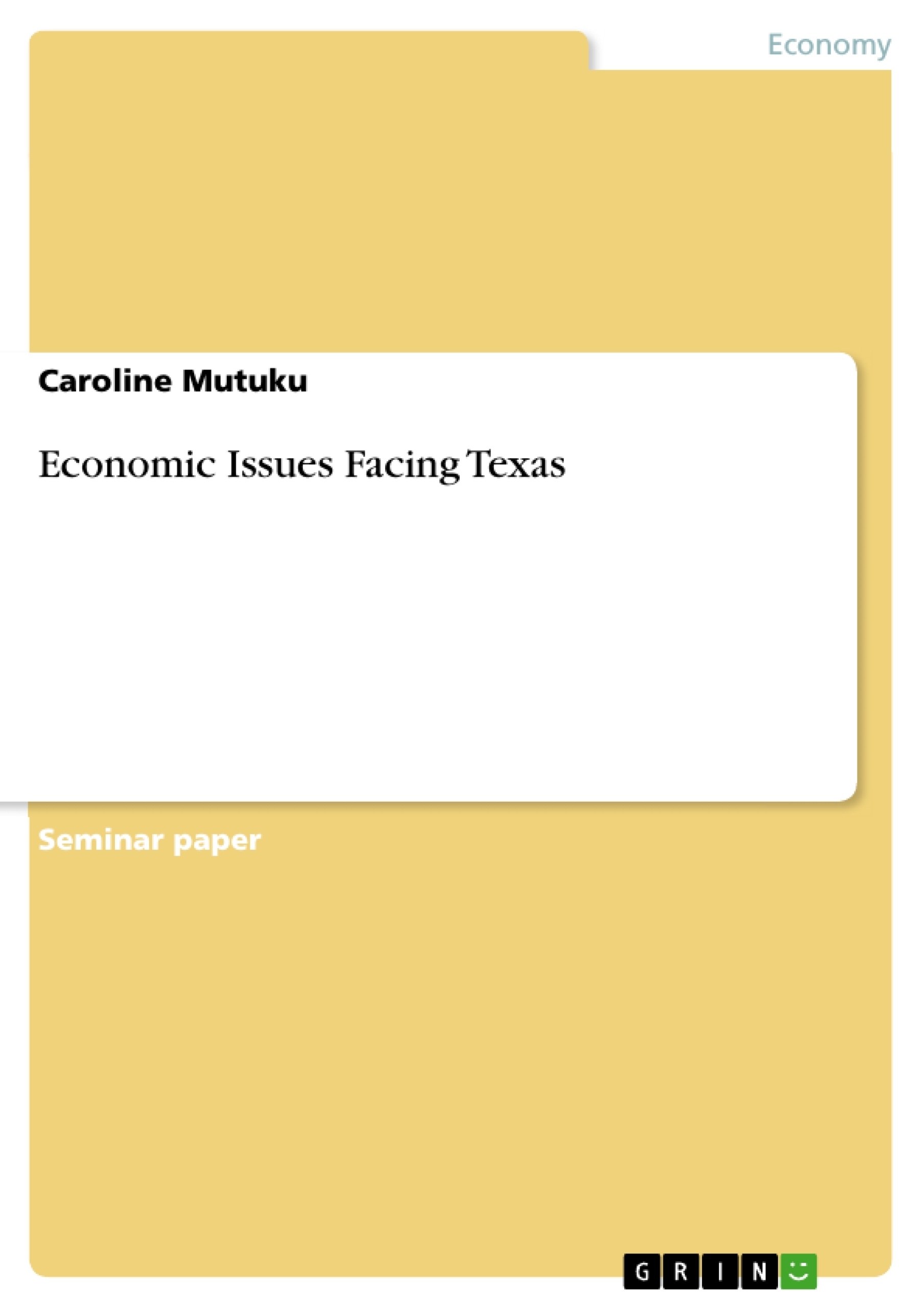Texas has emerged to be one of the most competitive states in the United States, especially with regard to its economic status. As such, it has attracted an enormous number of people who are seeking employment opportunities. It has also become a preferable hub for business investors, owing to its economic prosperity. Currently, demographic reports indicate the population of Texas to have increased to about 25 million, by 2010, and this population is projected to reach the 55 million mark by 2050 (Biar par. 1). However, the state is currently facing numerous public policy challenges.
Therefore, this research paper will provide a critical assessment of the issues facing Texas, especially with regard to the education, budget and energy policies.
Table of Contents
Introduction
Education Policy in Texas (Public Education K-12)
Budget Policy in Texas
Conclusion
References
Introduction
Texas has emerged to be one of the most competitive states in the United States, especially with regard to its economic status. As such, it has attracted an enormous number of people who are seeking employment opportunities. It has also become a preferable hub for business investors, owing to its economic prosperity. Currently, demographic reports indicate the population of Texas to have increased to about 25 million, by 2010, and this population is projected to reach the 55 million mark by 2050 (Biar par. 1). However, the state is currently facing numerous public policy challenges. Therefore, this research paper will provide a critical assessment of the issues facing Texas, especially with regard to the education, budget and energy policies.
Education Policy in Texas (Public Education K-12)
Texas relies heavily on skilled human capital for its economic and social development. Combs, who is the Texas Comptroller states, “Starting early in life, our children must receive a good education and the ability to perform the jobs that will drive the economy in the future” (par. 12). Historically, the state of Texas has been facing unprecedented public policy challenge, especially with regard to education expenses. Texas Education Agency reports that, in 2005-06 school year, an estimated revenue of $43.3 billion was spent on public schools. Parents in urban centers are actively moving their children to suburban schools in search of quality education despite the compromised educational standards across Texas. Alexander and Terry (2008) report, “Per-student costs have almost doubled in the last 10 years, going from $5,282 per student in 1995-96 to $9,629 in 2005-06 without a significant increase in the quality of education as demonstrated by stagnant test scores and student achievement” (p. 1). The Intercultural Development Research Association (IDRA) has identified nine core issues, which are believed to have contributed to the educational issues. However, it is worth noting that, only eight of the nine issues concern the K-2 education. The most significant educational issues facing the state of Texas include an enormous number of school dropouts, lack of alternative disciplinary education programs and poor student assessment.
As a result, Texas has embarked on several educational reforms to upgrade the value of K-2 education, a move which is believed to raise educational standards of Texas to the next level; thus, allowing students to acquire reliable skills to pursue higher education and gain competitive advantage in the competitive global job market. To address the current educational policy challenges, IDRA has designed efficient reforms aimed at improving educational standards. The current reforms in education policy focus on reducing school dropouts. IDRA has also designed educational reforms to introduce open enrollment charter schools, in-grade retention, school facilities funding, use of public money for private schooling and appropriate test score assessment strategies. In addition, it seeks to establish disciplinary alternative education programs for K-2 graders and improve access to comprehensive instruction, especially for students learning English (Montecel & Cortez par. 7).
In regard to school dropout, IDRA has directed for the change of the current definition of a dropout so as to exclude non-verified transfers and GED counts.
Secondly, it has directed for an inclusion of longitudinal dropout rates as part of the state’s accountability rating systems to ensure consistency in data collection.
On open enrollment charter schools, Texas legislature called for the establishment of 20 charter schools, although the legislature did not have valid information on the effectiveness of the proposed charter schools, which were supposed to have minimum state control. These charter schools were intended to supplement the 100 schools established, in 1997 under the non at-risk students program, and they were intended to introduce several educational settings for innovation under the community control (Montecel & Cortez par. 14).
On the other hand, in-grade retention aimed at modifying the current state student retention policy, in which in-grade retention was set to be the last option of consideration. Other reforms included the modification of the grade placement committee procedures and the elimination of TAAS in determining grade placement for K-2 and high school level students (Montecel & Cortez par. 25).
Therefore, it appears that, these reforms will introduce a high level of accountability in K-2 education; thus, improving the quality of education in Texas.
[...]
- Quote paper
- Caroline Mutuku (Author), 2016, Economic Issues Facing Texas, Munich, GRIN Verlag, https://www.grin.com/document/429614
-

-

-

-
Upload your own papers! Earn money and win an iPhone X. -

-
Upload your own papers! Earn money and win an iPhone X. -

-
Upload your own papers! Earn money and win an iPhone X. -

-
Upload your own papers! Earn money and win an iPhone X. -

-
Upload your own papers! Earn money and win an iPhone X.

